24.09.2025 – Pavel Klavík, Kamila Klavíková
Feeling stuck in a job that no longer fits? You’re not alone. Maybe it’s the culture, lack of flexibility, or the pace of change in today’s AI-driven job market. Admitting you need change is a first step — but figuring out what comes next can feel overwhelming. That’s why we teamed up with job market expert Jooble to show you how mind mapping can help make sense of your thoughts, reveal new paths, and guide your next steps with clarity.
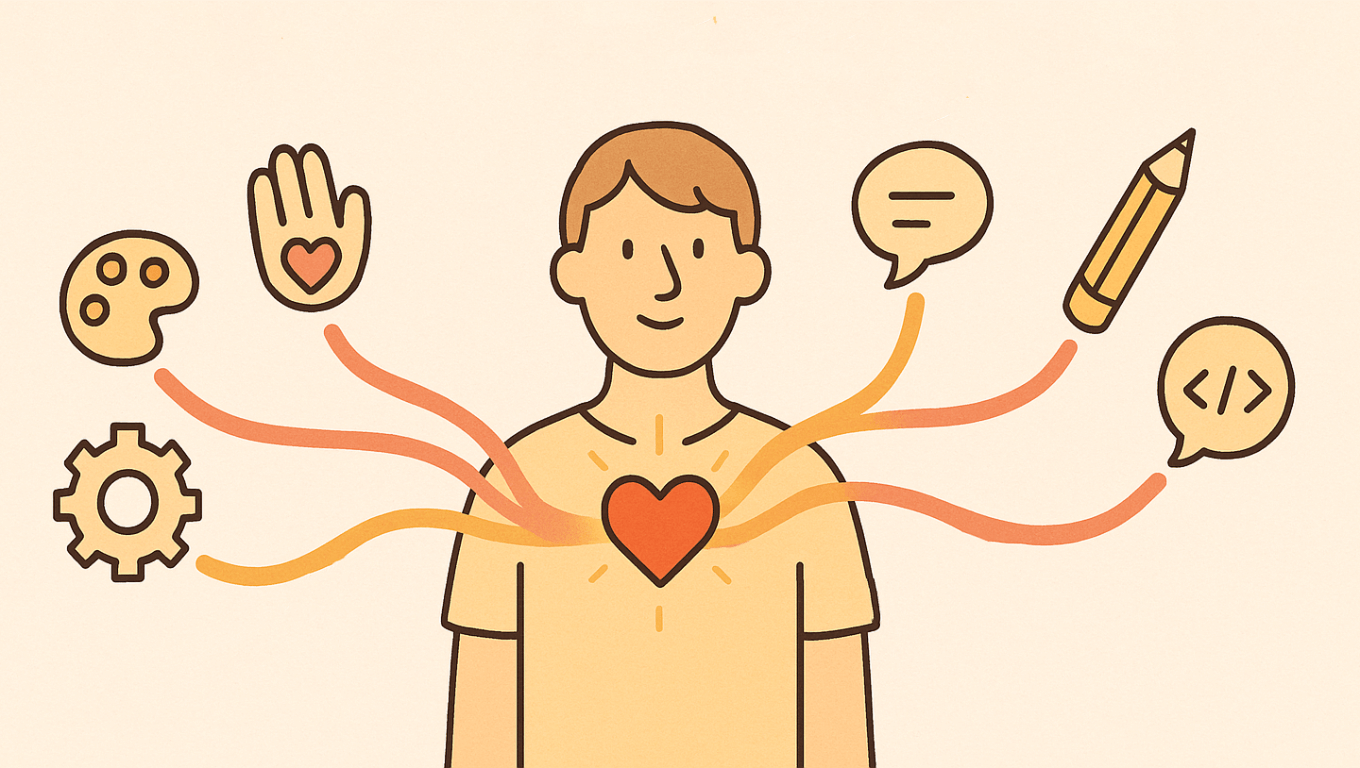
#usecase, #OrgPad, #mind-maps, #career
Mind mapping offers a way forward. Instead of juggling scattered thoughts and doubts, you can create a clear, visual overview of your situation. With a tool like OrgPad, you’ll map out what matters most, highlight your strengths, and begin shaping practical steps toward a career that suits you better.
A career change doesn’t happen overnight. It usually moves through several stages: reflecting on what you want, making a decision, exploring the job market, reaching out to employers, and preparing for interviews.
A mind map gives you a clear overview of all these stages in one place. You can capture both the “why” (why you want a change) and the “how” (the actions that will get you there). Seeing everything mapped out helps you make better decisions and stay motivated.
When your head is full of competing thoughts, it’s easy to lose focus. A career mind map helps you sort through the noise and see your situation more clearly.
Take Anna, a marketing specialist who felt stuck in her job. By mapping her situation in OrgPad, she quickly identified three priorities: a healthier work-life balance, a role with more creativity, and a company culture she could thrive in. She also mapped her strengths — communication, project management, and visual design. This simple exercise opened up new directions she hadn’t considered before, like brand strategy and UX design.
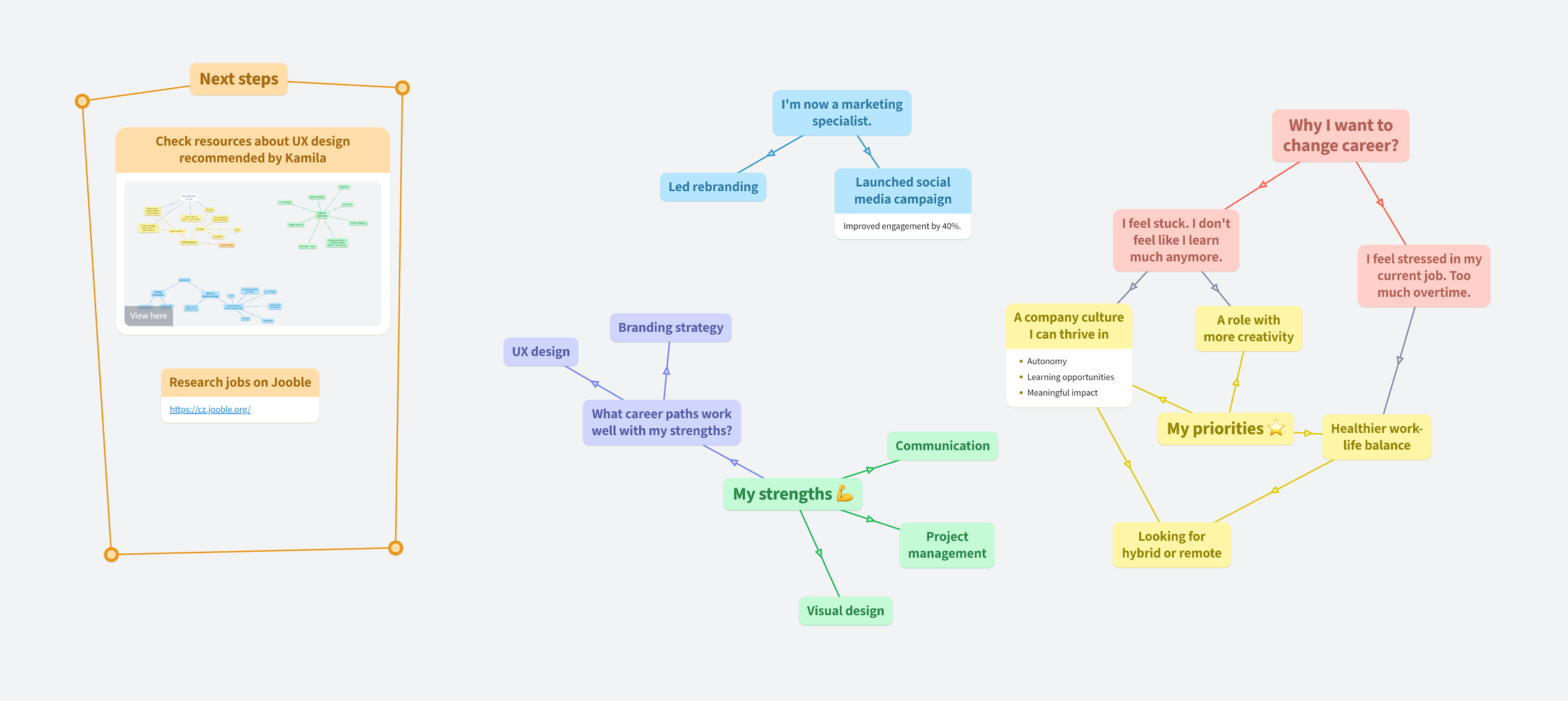
You can do the same. Here’s a simple way to start:
The clarity you’ll gain here will guide everything that follows.
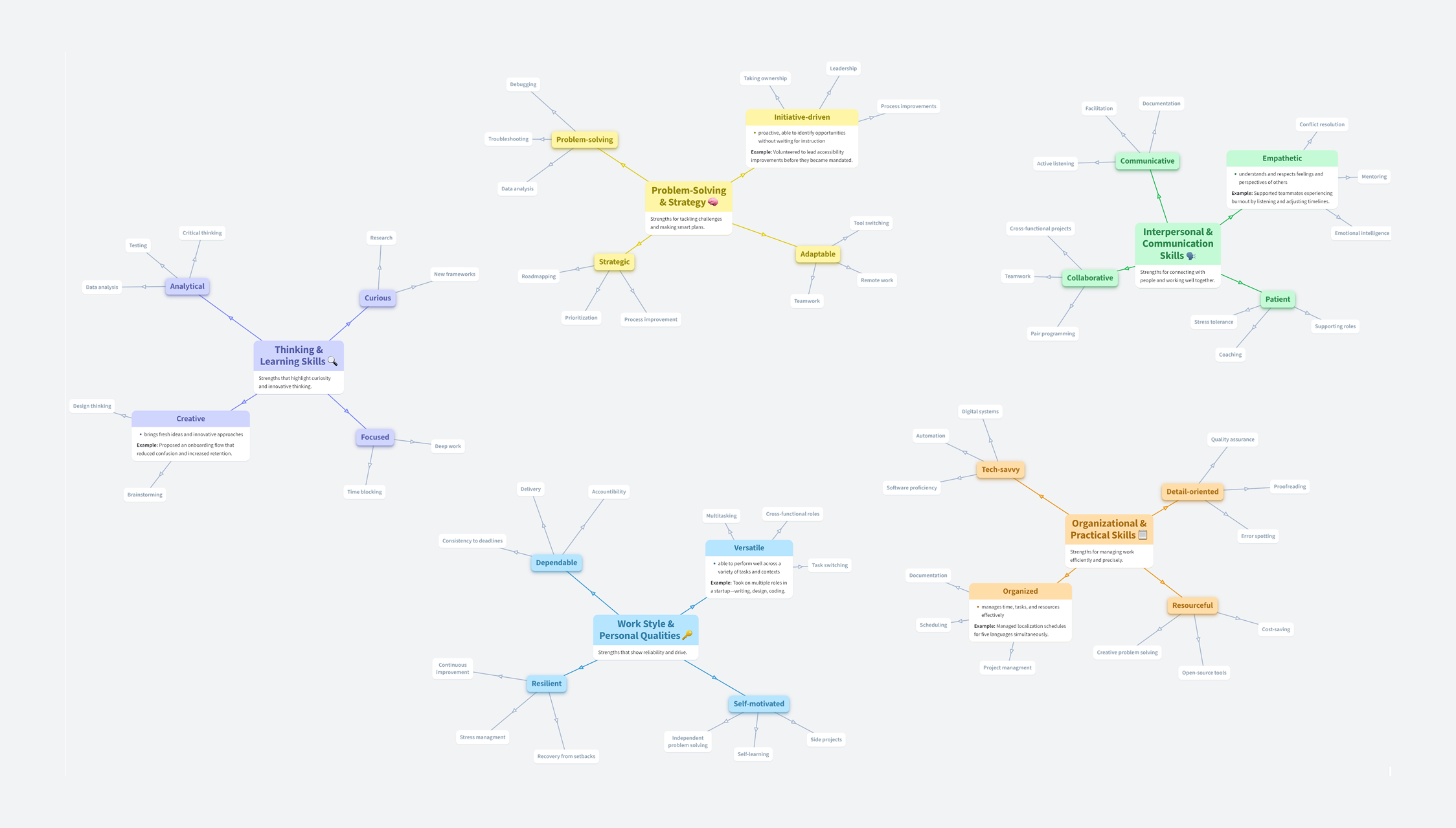
Once you’ve mapped your priorities and strengths, expand your mind map with possible career directions. Map out:
This structured approach helps you compare options side by side and spot paths that fit your values.
The illustration below is a starter template you can open in OrgPad. Register or log in to use it for free. Click the image to create a copy you can freely edit. You can explore options right away, without having to build a map from scratch.
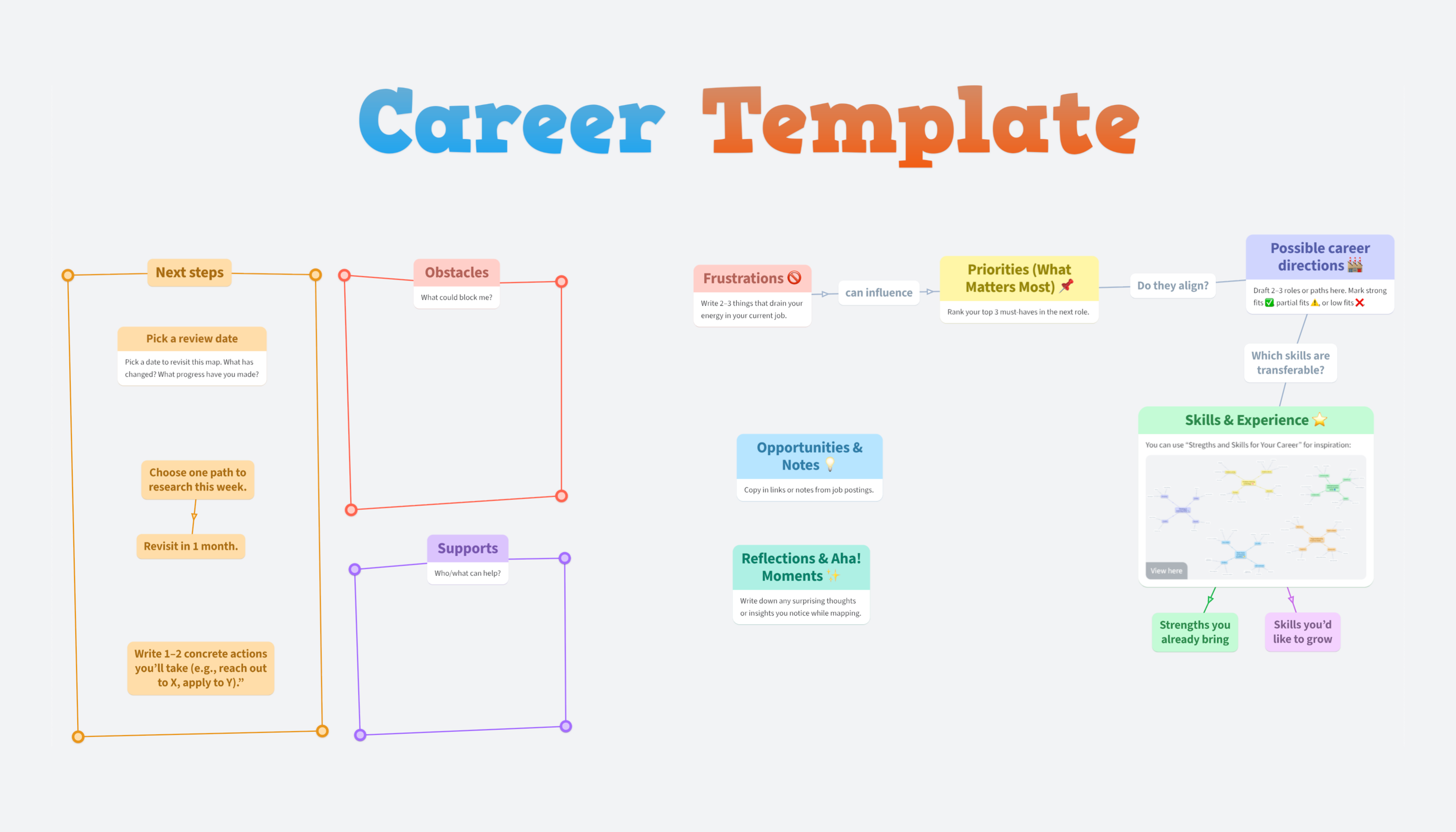
When it’s time to update your CV or prepare for interviews, your mind map becomes a goldmine. You already have an overview of your strengths, projects, and achievements. This makes it easy to create a CV that highlights the right skills and experiences for each specific employer.
For interviews, use your map to prepare. Create a cell for each potential question: “Why do you want to leave your current job?” or “What’s your biggest strength?”. Jot down key phrases so you’re ready with clear, confident answers.
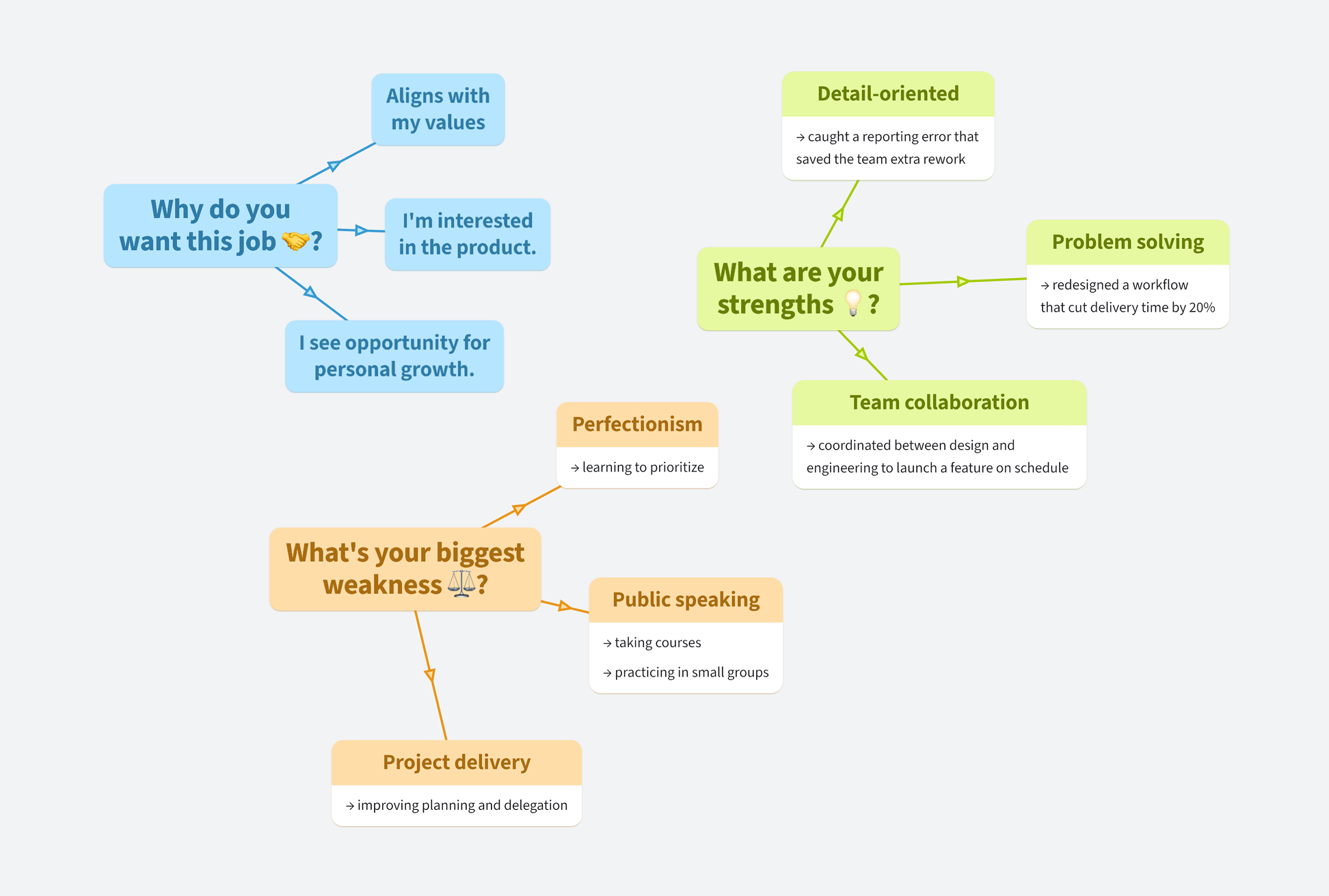
A career map isn’t something you make once and forget. Keep updating it as you gain more experience, connect with employers, and discover new opportunities in the job market. Add job postings, track where you’ve sent applications, and note responses.
Make it a habit to revisit your career map regularly — weekly or after each job application. You’ll start to notice patterns in what roles interest you most or where responses are coming from. This kind of active reflection helps you stay prepared and respond quickly when new opportunities appear.
Track job postings directly on company websites or on platforms like Jooble, which collect postings from many sources and help you find a new role that matches your criteria.
Sometimes your map can get messy. Don’t worry — that’s normal. When it starts to lose clarity, pause and return to the basics:
If your map becomes too complex, remove anything unnecessary and start again with a simpler structure built around your main goal. Once the basics are clear, you can add new elements such as company culture, management style, or even LinkedIn contacts that might help you on your journey.
Mind mapping is more than sketching ideas. It’s a tool for structured thinking. If you’re searching for your dream job, it helps you connect goals, values, and steps in one clear picture. With OrgPad, your career map becomes more than a plan — it’s a living document you can refine and work with every day.
If you’re serious about changing careers, don’t let chaos hold you back. Create your own career mind map in OrgPad today — just add your top three priorities to get going. Clarify what matters most, uncover your strengths, and take confident steps toward the job you’ve been dreaming of.